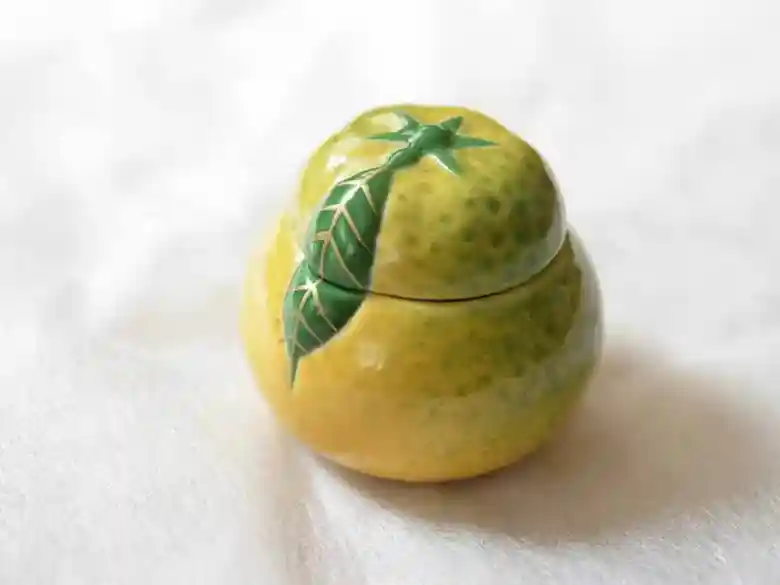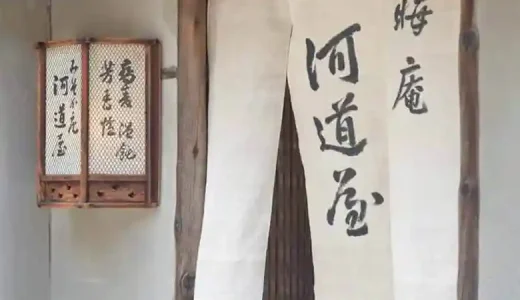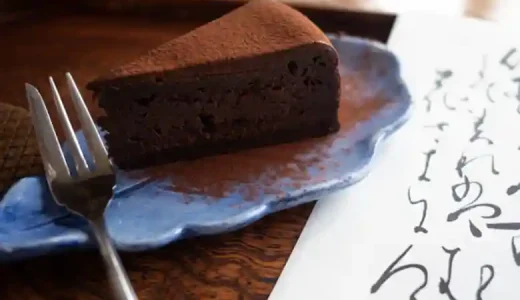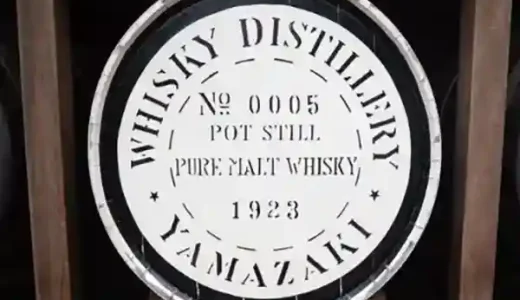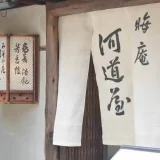Here are two great stores I found on my trip to Kyoto. These stores are located on Aneyakouji Street.
Aneya Koji Dori
Aneya Koji Dori is one street south of Oike Dori, stretching east to west from Kiyamachi Dori to Gozen Dori. I headed north on Teramachi Dori from Sanjo Dori, turning left at the corner of Kyukyodo to Aneaya Koji Dori. It is a quiet, historic neighborhood with traditional townhouses and long-established stores.
Yaosan(八百三)
The yuzu ornament was not a product but a container for yuzu miso. Yaosan is a long-established store that has been selling yuzu miso since 1727. Yaosan’s yuzu miso is made by cooking yuzu with white miso and sugar in the store’s unique way.
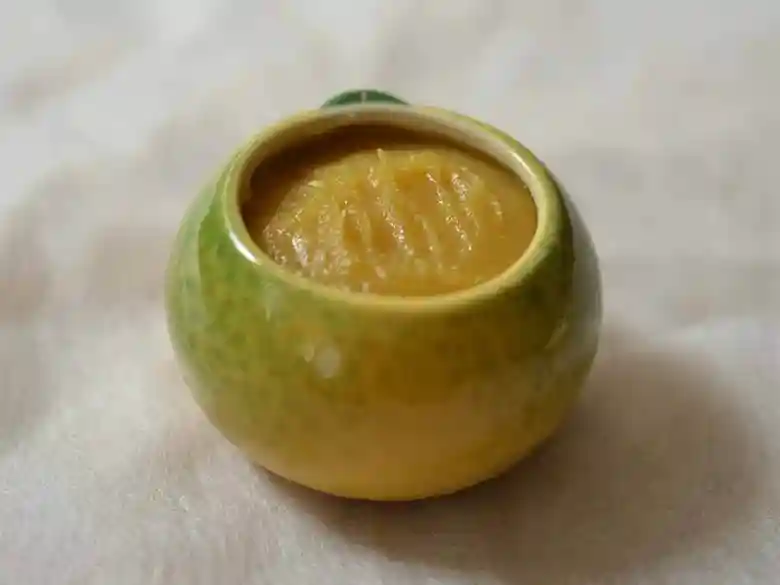
Tasting the yuzu miso, we found it to be a sweet yuzu paste based on white miso. There are many ways to enjoy yuzu miso. Furofuki daikon (simmered Japanese radish served with miso) and Dengaku (bean curd baked and coated with miso) are the most common, but it is also delicious spread on bread. The ceramic yuzu containers came in three different sizes. I bought the smallest one.
Izumiya Ichiko Shoten(泉屋市古商店)
At Aneya Koji Dori, I found another retro building with a quaint atmosphere. There was a wooden sign with a sense of history. It was Izumiyaichiko Shoten, a liquor store established in 1937.
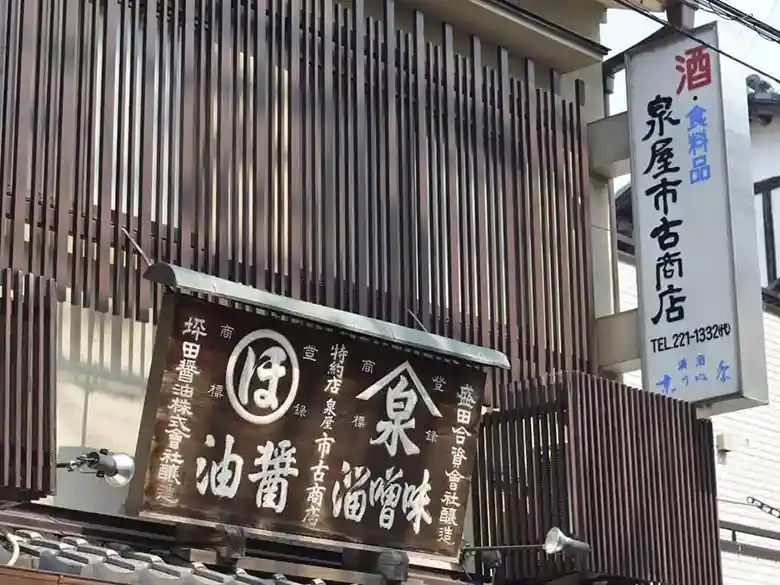
The store had a wide selection of sake called “Matsu no Tsukasa(松の司). The manufacturer of these sakes is Matsuse Shuzo in Shiga Prefecture. These sakes were made using underground water from the mountains as the brewing water. I bought two bottles for my dinner.
Junmai Ginjo Arabashiri
Junmai Ginjo-shu is a sake made from only rice, rice malt, and water, characterized by its clean and refreshing taste.
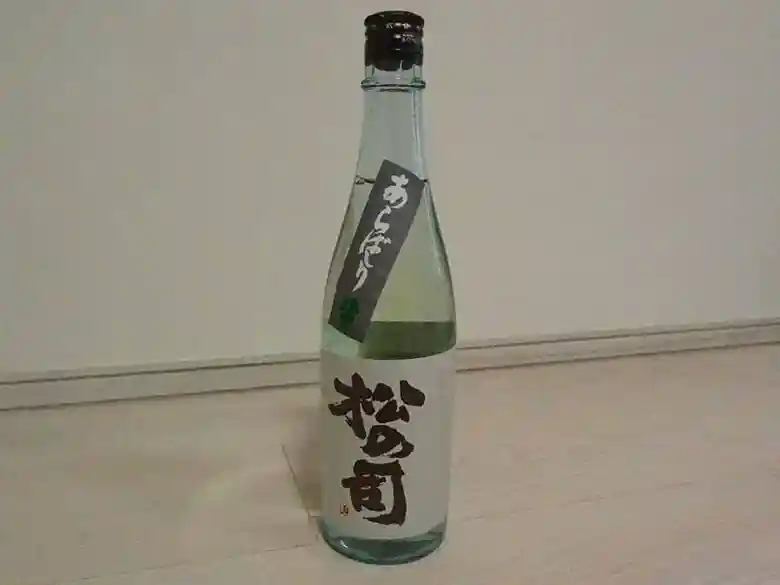
This sake had a robust flavor with a fruity aroma.
Nama-moto Junmai Nama-Genshu
Nama-moto is a traditional brewing method. It produces sake without adding lactic acid, which is used to prevent the growth of bacteria. It is a complicated method and requires a great deal of skill.
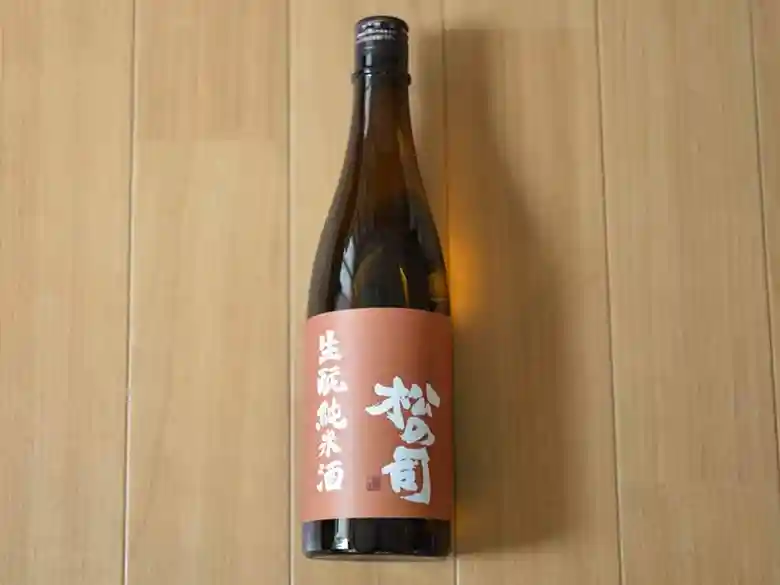
This sake initially tasted sour but gradually developed a fruity sweetness.
Kyoto was a place of many pleasures for me, as I was surprised to find such beautiful things at a store in the city where I stopped by on a whim.
